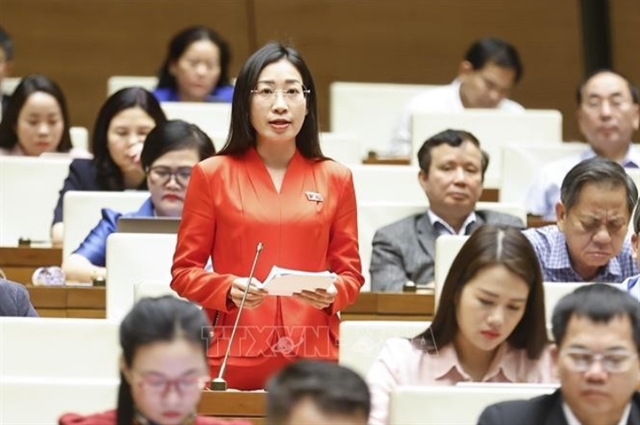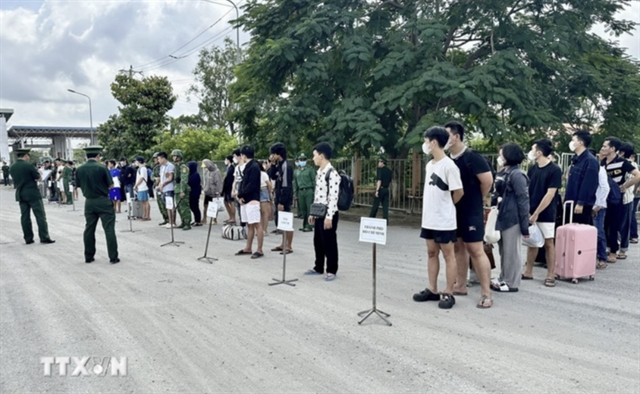 Economy
Economy


|
| A bank teller counts cash. Liquidity and interest rates in the banking system have eased in recent weeks. VNA/VNS Photo |
HÀ NỘI — Property-sector risks have made operating conditions more difficult for banks in Việt Nam in the short term, but the liquidity crunch is easing and the banking system is likely to avert a sharp slowdown due to the concerted response of policymakers and banks, says Fitch Ratings.
In a report released last week, the rating agency said headwinds may persist into the second half of 2023 and banks' financial performance is likely to diverge according to the strengths of their funding franchises and appetite for risk, but long-term fundamentals and business prospects for the sector remain positive.
Liquidity and interest rates in the banking system have eased in recent weeks, although loan growth remains relatively subdued and was at a decade-low in April 2023.
Narrow spreads between Vietnamese đồng and US dollar market interest rates limit the extent by which policymakers can reduce banks' funding costs further, which has eaten into net interest margins (NIMs) – especially for smaller banks.
Public pressure to cut lending rates is also likely to compress lending margins, but banks have headroom in lending spreads to maintain substantial pre-provision profitability.
Fitch said the Government and the State Bank of Vietnam (SBV) have demonstrated a clear policy will unclog liquidity flows. This includes conventional cutting of red tape and fiscal and monetary stimulus, but also encouraging credit and granting forbearance on bank regulations.
Many banks have not reduced real-estate lending or bond holdings significantly in Q1 2023, suggesting that such debt will be refinanced to avoid crystallising wider defaults and losses. Primary-market bond issuance remains a mere shadow of recent years, but is starting to thaw amid conspicuous state endorsement.
According to Fitch, the SBV became one of the first central banks in the region to cut policy rates to ease funding pressure for borrowers, although exchange-rate stability priorities could limit how much more it can inject liquidity without pressuring the đồng.
“We expect liquidity to recover gradually over the next few quarters as macro headwinds subside and domestic sentiment recovers," Fitch said.
"Revival of the bond market to help issuers refinance maturities totalling VNĐ239 trillion (US$10 billion) for the remaining of 2023 will also be an indicator of liquidity reprieve.”
Non-performing loan (NPL) ratios rose across most major banks in Q1 2023, but Fitch does not expect a spike in 2023 as Circular 02/2023 issued in April permits banks not to downgrade restructured loans between now and mid-2024.
The SBV nevertheless requires banks to provision for half of such loans by end-2023 and the rest by end-2024. Transparent disclosure and timely provisioning will guide Fitch assessment of banks' risk profiles and asset quality.
“Banks' access to deposit funding is driven by the strength of their deposit franchises, where we believe State banks have an edge. NIMs are likely to narrow moderately in the near term as there is limited flexibility to raise lending yields, while credit costs will be another near-term differentiator of banks' profitability,” Fitch said. — VNS




